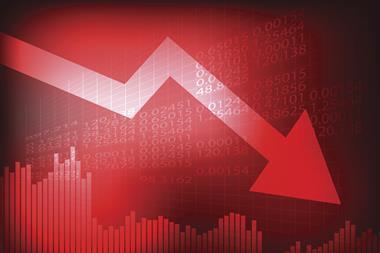Claims inflation has been outstripping rate increases in recent years, forcing insurers to sit up and take notice
In the last month alone, claims inflation has caused Hastings’ profits to slump and Admiral to say it expects to report a worsening loss ratio. Previous months have also seen the likes of Saga and financial ratings agency Moody’s say that worsening claims inflation is dampening profits in the highly competitive UK motor market.
While claims inflation is nothing new, increasing prices, particularly for repair costs for accidental damage claims, have come to the fore of late.
Insurers (and their shareholders) will be worried that the latest round of financial reports with their warnings of rising claims inflation could be the canary down the coal mine that heralds tough times ahead for motor insurers.
And Willis Towers Watson head of claims consulting Tom Helm says insurers are right to be concerned.
“Claims inflation is going to continue to be an issue,” he says. “It is primarily the price of parts that is driving up the cost of repairs for accidental damage claims, as well as an increasing amount of technology in the vehicle making repairs much more complicated.
“That is evidenced by the fact that we are seeing the number of parts-per-repair increasing, and parts as a proportion of the total cost of a repair has seen the biggest increases.”
And Helm said the rising claims inflation will also have knock-on effects for insurers.
“As the cost of repairs go up, we also see a lot more claims becoming total loss cases as they are now beyond economic repair,” he said.
EY executive director Tony Sault agreed, saying that advanced driving assistance systems (ADAS) are a big factor in driving claims inflation.
“A lot of this damage inflation is caused by the price of the parts that are needed to repair a vehicle, and it is well known we have a lot of ADAS being built into cars at all levels, not just the high-end luxury models,” he said.
“When these get damaged, it is no longer just a case of knocking out a dent, it could be that the whole bumper needs to be replaced. And with all the sensors and systems that sit behind the bumper that could be very expensive.
“Windscreens are no longer just a piece of glass now, all the sensors need to be professionally recalibrated, and all of that costs money. That is a really big driver of the cost of repairs,” he added.
Bodily injury
EY’s research has predicted that claims inflation will continue to run at around 7% during 2020, and the consulting firm’s senior manager Ben Wilson said the issue has been creeping up the list of issues shareholders are concerned about.
“Historically, bodily injury has been the driver of claims inflation, but more recently damage has become an increasing proportion of the policy cover [and is now the main driver of claims inflation],” he said.
“If you look at the 2019 results, insurers are having to explain some bad news. And if you look at the main sources of issues in motor at the moment, you have claims inflation on one hand and premiums falling over the last couple years on the other, and that has compounded into a deterioration in some of the 2019 financial results.”
Increasing rates would be one way to offset the rise in claims inflation, but this is notoriously difficult in the highly competitive UK motor market.
| Region | Average cost per claim - Increase (2016 to 2018) |
|---|---|
|
Wales |
22.4% |
|
North East |
22.4% |
|
South East |
21.4% |
|
Scotland |
20.8% |
|
Eastern |
20.4% |
|
South West |
19.8% |
|
West Midlands |
19.8% |
|
East Midlands |
18.7% |
|
London |
16.7% |
|
Yorkshire |
15.3% |
|
North West |
12.9% |
Source: Willis Towers Watson
Powerless insurers?
Moody’s analyst Dominic Simpson said: “If claims inflation has been increasing and it is ahead of the price increases put through by insurers in 2019, then loss ratios for the current year basis should deteriorate a bit.
“We can certainly see why the likes of Admiral and Hastings have been making the comments they have. An increase in rates would help to compensate for this persistently high claims inflation, but at the same time we are talking about a market that for many of the last 20 years has not been profitable from an underwriting perspective.
“It is highly competitive and because of the amount of capacity available it is difficult to get price increases through. Any increases that are put through will be of a more gradual nature, just because of the very competitive nature of the market.”
But this does not mean insurers are powerless.
Willis Towers Watson’s Helm said: “The key things for insurers are around proactivity. The high performing claims teams are all about proactive management, with high speed of decision making and having well thought-out strategies in place to control spend and execute those decisions.
“Machine learning is a massive enabler for claims teams to improve their performance. A lot of the analytics over the last decade has been focused on pricing, and the key area it will benefit the most over the next five years will be claims.”
And Helm added that the advantage for insurers in getting this right is clear for all to see: “The better you handle claims, the less you have to put up prices and therefore you have a competitive advantage.”














































No comments yet